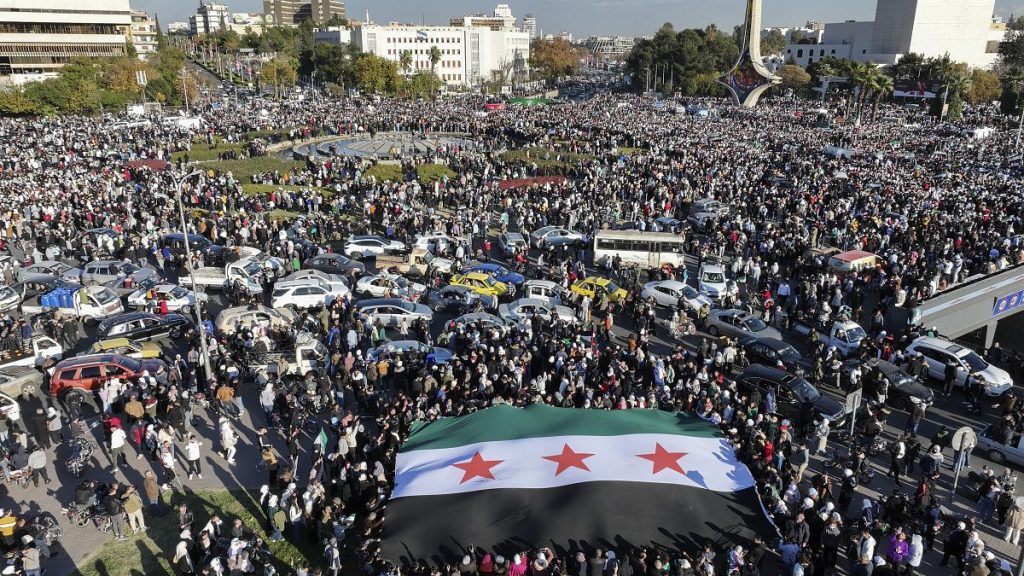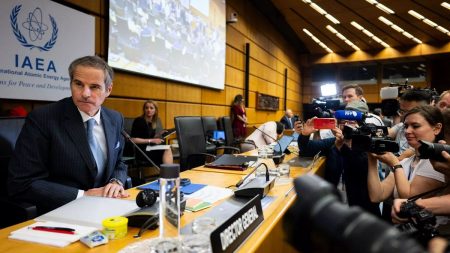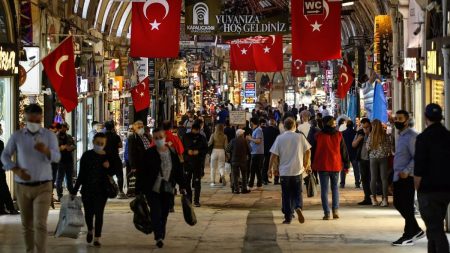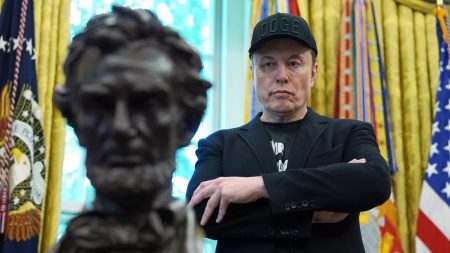The abrupt downfall of Syrian President Bashar al-Assad after half a century of authoritarian rule has ushered in a period of dramatic transformation and uncertainty. Syrians celebrated the end of Assad’s reign with Friday prayers across the nation, marking a turning point in a conflict that has ravaged the country for years. However, the jubilation is tempered by apprehension about the future, particularly concerning the composition and policies of the interim government and the potential for renewed conflict.
The rapid shift in power has created a complex and delicate political landscape. US Secretary of State Antony Blinken, engaging in a diplomatic whirlwind tour of the region, emphasized the need for an “inclusive and non-sectarian” interim government in Syria. Blinken’s meetings in Jordan, Türkiye, and Iraq focused on coordinating a response to the Syrian transition and ensuring the new government respects minority rights, promotes stability, and poses no threat to neighboring countries. The US has yet to engage directly with the new leadership, raising questions about its approach to the evolving situation.
Hayat Tahrir al-Sham (HTS), the dominant insurgent group that seized Damascus and precipitated Assad’s fall, has taken center stage in shaping the post-Assad era. HTS leader Ahmad al-Sharaa, also known as Abu Mohammed al-Jolani, has sought to project an image of moderation and inclusivity, promising a pluralistic government. However, HTS’s past association with extremist ideologies and its continued designation as a terrorist organization by the US and European countries remains a significant obstacle to its international acceptance and ability to secure much-needed aid and support.
The involvement of multiple foreign powers further complicates the situation in Syria. Türkiye, instrumental in supporting the Sunni Arab insurgents against Assad, maintains a strong presence in northern Syria and opposes any expansion of Kurdish influence. This dynamic puts Türkiye at odds with the US, which supports Kurdish-led forces in eastern Syria in the fight against remnants of the Islamic State group (ISIS). Israel, another regional actor, has conducted airstrikes within Syria, aiming to prevent weapons from falling into extremist hands and maintaining a buffer zone in the south. These overlapping interests and competing agendas create a challenging environment for establishing a stable and unified Syria.
Blinken’s diplomatic efforts aim to navigate this complex web of alliances and rivalries. His discussions with Turkish Foreign Minister Hakan Fidan revealed “broad agreement” on the desired characteristics of an interim Syrian government, including inclusivity, protection of minority rights, and regional stability. However, tensions remain, particularly regarding Türkiye’s concerns about Kurdish activities along its border and the US’s continued support for Kurdish forces. The reopening of the Turkish embassy in Damascus after more than a decade signals a shift in Turkish policy and a potential avenue for greater engagement in shaping Syria’s future.
Beyond the immediate concerns of establishing a new government and managing regional tensions, the threat of ISIS resurgence looms large. In Baghdad, Blinken met with Iraqi Prime Minister Mohammed al-Sudani, underscoring the shared commitment to preventing ISIS from exploiting the instability in Syria. This concern highlights the fragility of the current situation and the potential for further conflict. The US is also pressing Iraq to assert greater control over its territory and airspace to curtail Iran’s transfer of weapons and equipment to Syria, which could further destabilize the region. The post-Assad era in Syria is fraught with challenges and uncertainties. The complex interplay of regional and international actors, the legacy of the conflict, and the persistent threat of extremist groups will all play a crucial role in shaping Syria’s future.














